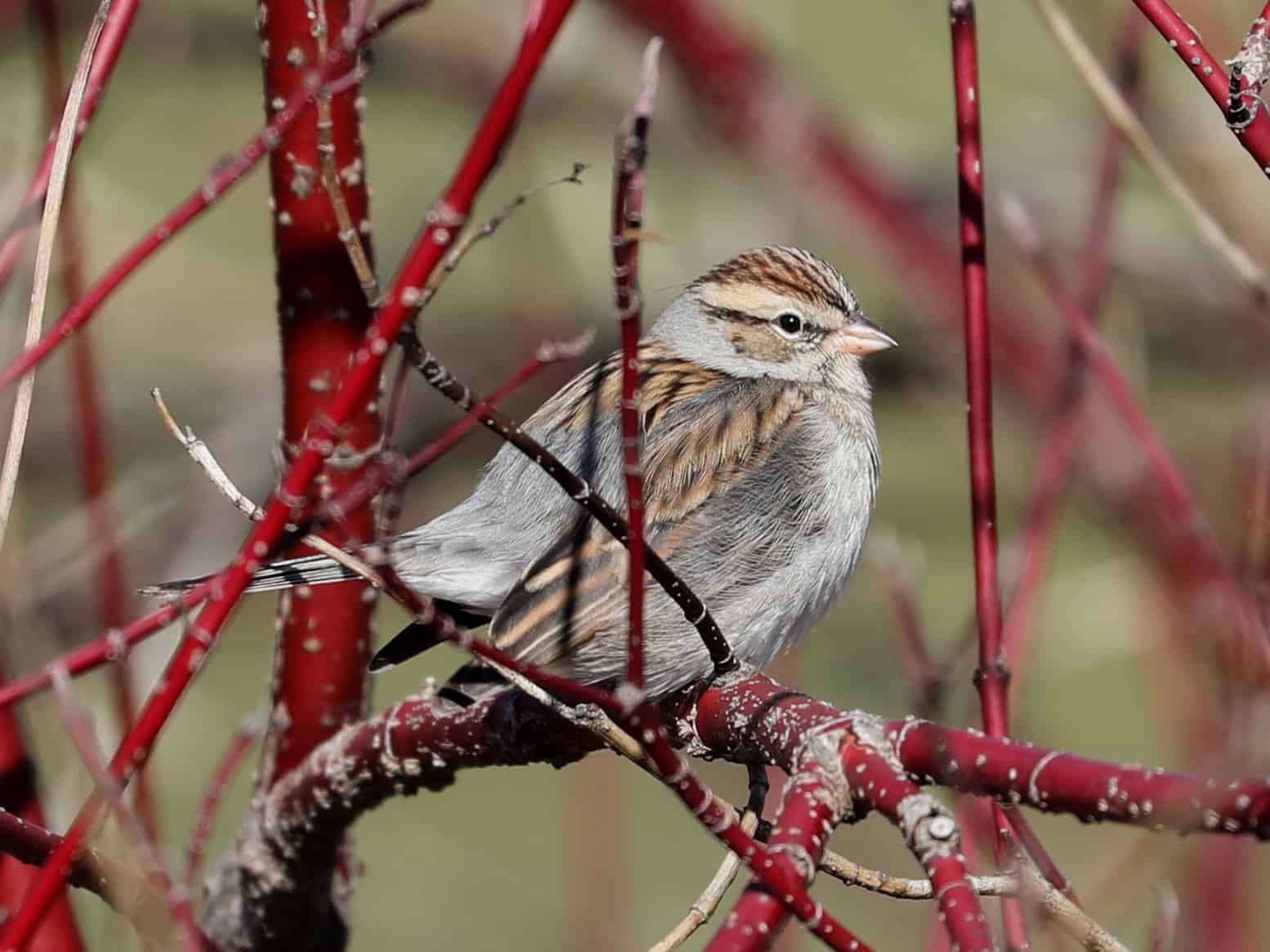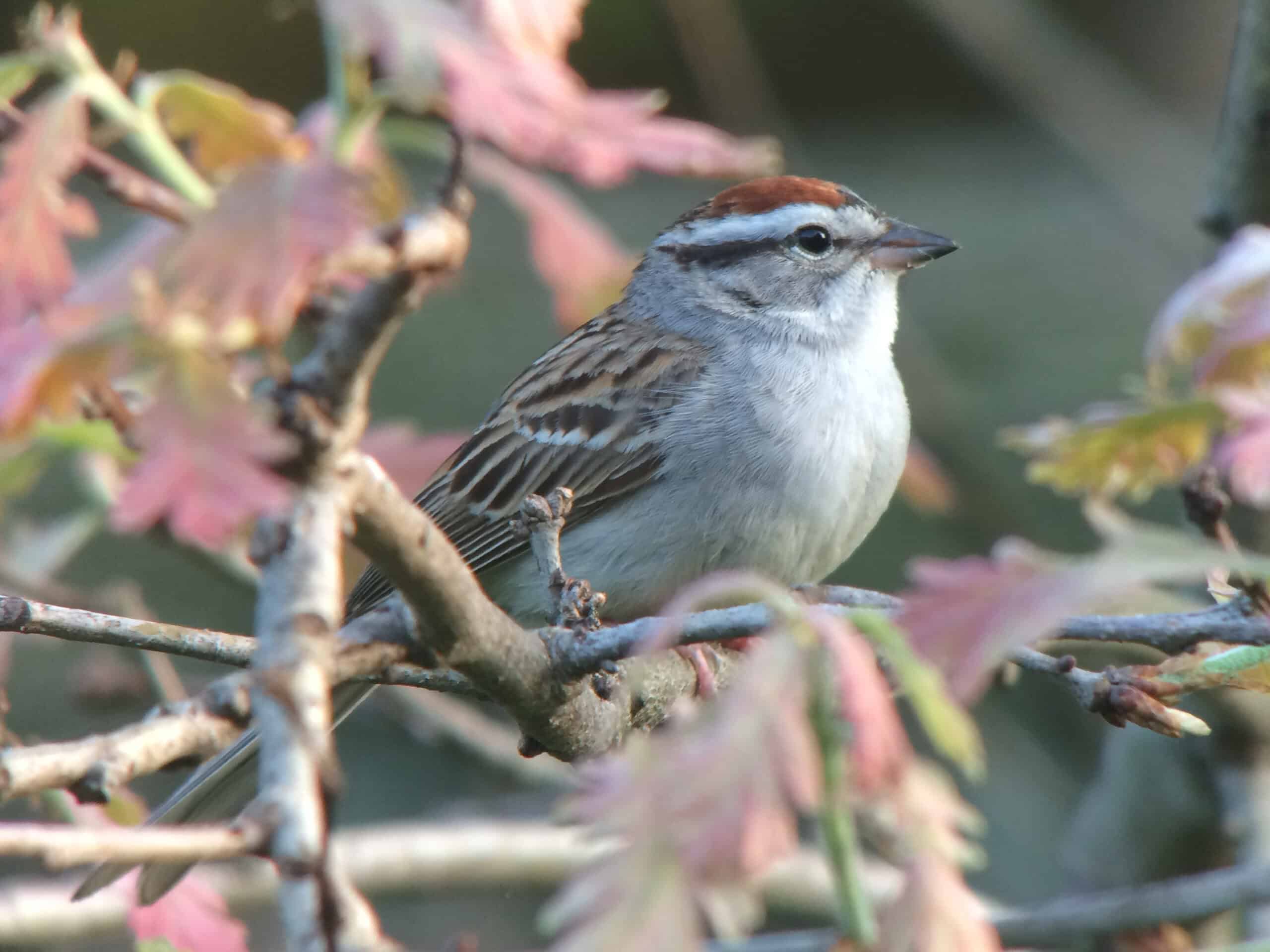Out-of-Season Visitor: Chipping Sparrows
Just last week when I wrote about Song Sparrows, I mentioned that other common backyard sparrows like Chipping Sparrows aren’t here in the Susquehanna Valley all year long. As it happened, my son Eddie and I found five Chipping Sparrows in York County the day after I sent that email. Chipping Sparrows are reported 10-40% of the time by birders in our area during the spring and summer, but less than 1% of the time between late November and early March. This time of year, most Chipping Sparrows are in the southeastern United States.
The Chipping Sparrows we found were part of a mixed-species flock foraging in some bushes along the road. There were dozens of Dark-eyed Juncos, a handful of White-throated Sparrows, a Northern Cardinal, and nearly a hundred European Starlings. Birds often flock together in winter to gain protection from predators like Cooper’s Hawks. In addition to having more birds watching for danger, it’s harder for hawks to target any specific bird when the flock flies together.
Check out the differences in the plumage of the sparrow I photographed in December this year versus the bird below that I photographed years ago during the spring. The December sparrow is in its non-breeding, or “Basic,” plumage, with narrow darks streaks on the crown. The April sparrow below shows the Chipping Sparrow’s breeding, or “Alternate,” plumage, with a bright rust-colored crown feathers and a pale strip above each eye. Like most songbirds, Chipping Sparrows replace most of their feathers once or twice each year through a process called molting.
Out-of-Season Visitor: Chipping Sparrows
Just last week when I wrote about Song Sparrows, I mentioned that other common backyard sparrows like Chipping Sparrows aren’t here in the Susquehanna Valley all year long. As it happened, my son Eddie and I found five Chipping Sparrows in York County the day after I sent that email. Chipping Sparrows are reported 10-40% of the time by birders in our area during the spring and summer, but less than 1% of the time between late November and early March. This time of year, most Chipping Sparrows are in the southeastern United States.
The Chipping Sparrows we found were part of a mixed-species flock foraging in some bushes along the road. There were dozens of Dark-eyed Juncos, a handful of White-throated Sparrows, a Northern Cardinal, and nearly a hundred European Starlings. Birds often flock together in winter to gain protection from predators like Cooper’s Hawks. In addition to having more birds watching for danger, it’s harder for hawks to target any specific bird when the flock flies together.
Check out the differences in the plumage of the sparrow I photographed in December this year versus the bird below that I photographed years ago during the spring. The December sparrow is in its non-breeding, or “Basic,” plumage, with narrow darks streaks on the crown. The April sparrow below shows the Chipping Sparrow’s breeding, or “Alternate,” plumage, with a bright rust-colored crown feathers and a pale strip above each eye. Like most songbirds, Chipping Sparrows replace most of their feathers once or twice each year through a process called molting.
About The Author
Dan Hinnebusch is the Ornithologist for Wild Birds Unlimited. Click to learn more.





